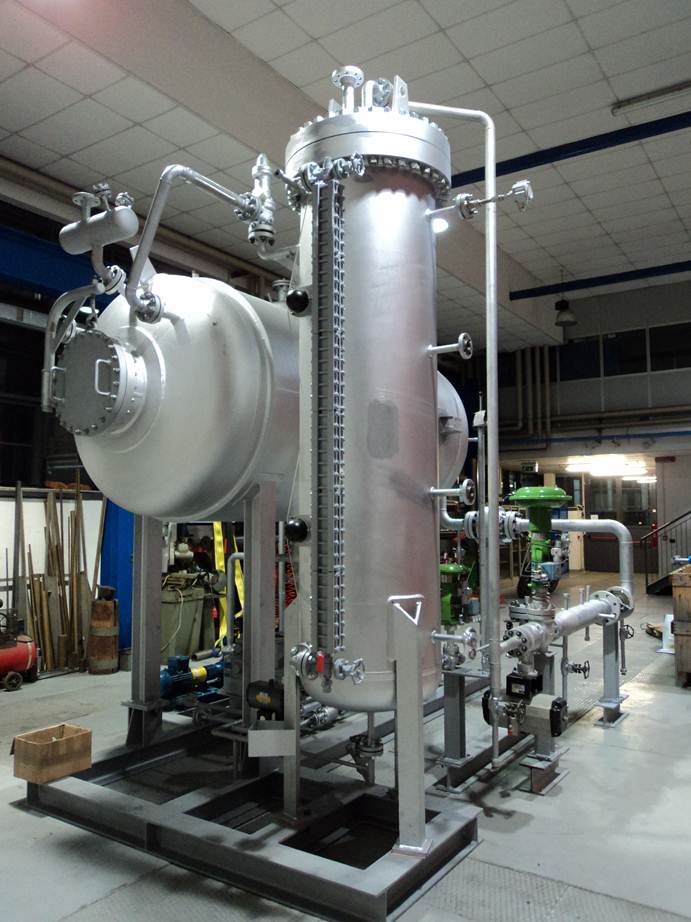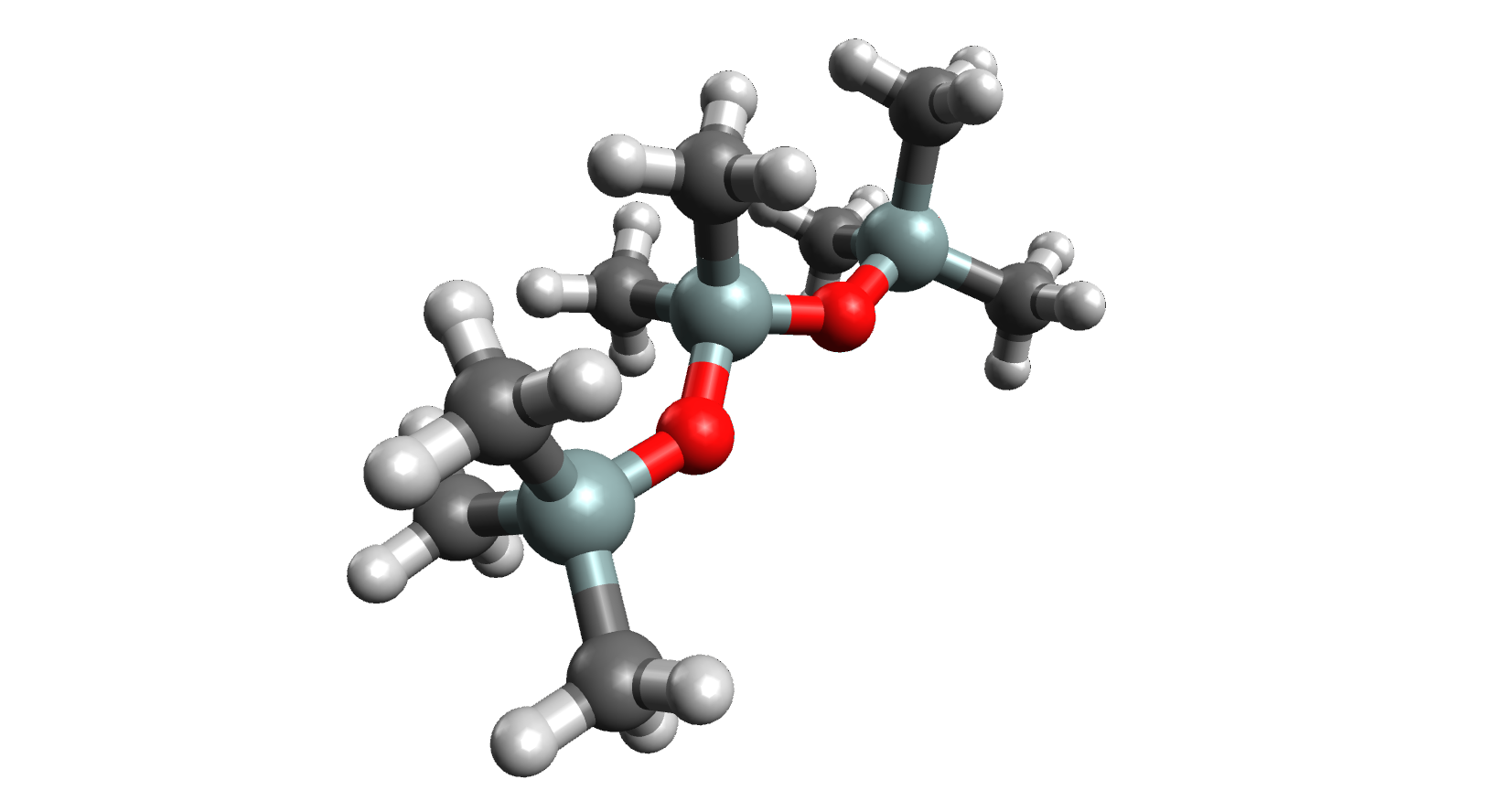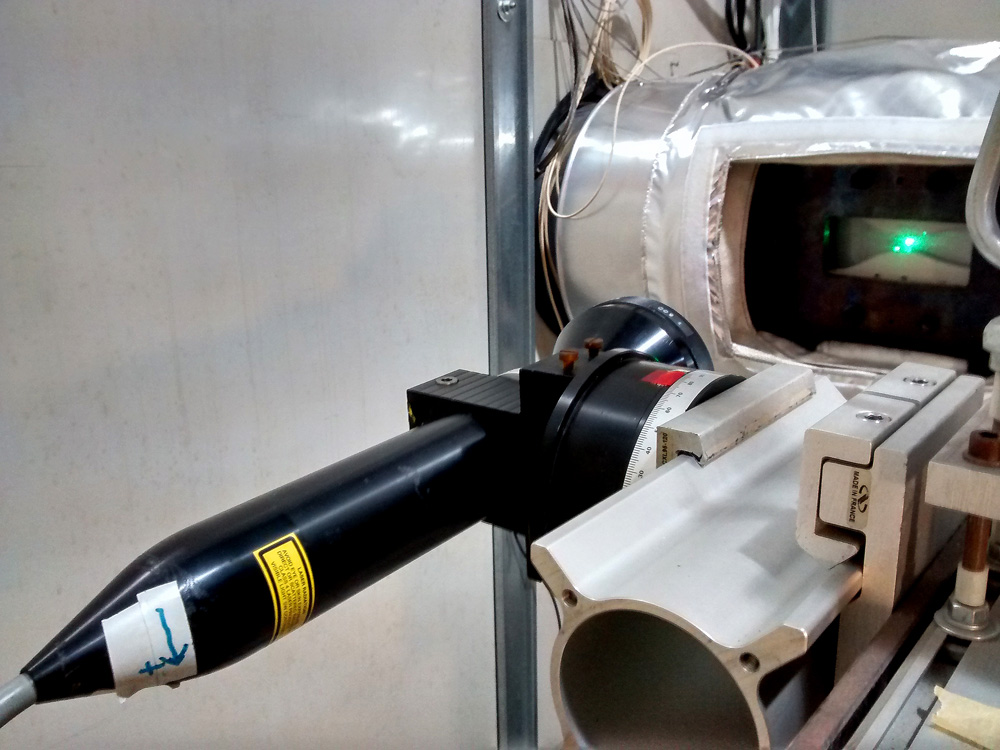Facilities
The Test Rig for Organic VApors (TROVA) was designed to investigate experimentally the non-ideal compressible-fluid flows of organic compounds in typical operating conditions for ORC applications. It is currently the only blow-down wind tunnel operated with organic vapours in the world. It is the first facility worldwide where expansions of organic vapours were observed both qualitatively using optical methods and quantitatively using pressure probes and thermocouples.
It implements a batch organic Rankine cycle (ORC). The turbine is replaced by a test section, currently equipped with a nozzle, where fluid dynamics measurements are performed. Within a high-pressure reservoir an organic fluid is evaporated up to non-ideal saturated, superheated or supercritical thermodynamic conditions. The vapor is then discharged through a planar, converging-diverging nozzle, which is the simplest geometry which realizes an expansion process comparable to the one occurring within ORC turbine blade channels. The vapor is then condensed in a low-pressure vessel and pumped back to the high-pressure reservoir through a membrane pump.
The flow field within the nozzle is characterized by pressure and temperature measurements and by Schlieren visualizations, aiming at investigating the different behavior with respect to the ideal gas one. In such a way, also the accuracy of the CFD tools (embedding non-ideal thermodynamic models) employed for the design/analysis of ORC components (and for diverse non-ideal applications) can be verified. Besides nozzle flows, are also of interest the study of non-ideal behavior of oblique and normal shock waves, which are obtained by inserting aerodynamic or bluff bodies within the supersonic flow downstream the test section.
The facility is also usable as a calibration wind tunnel for directional pressure probe and as linear turbine blade cascade tunnel.



THESTA
The maximum temperature of Organic Rankine Cycles is limited at high temperatures by the breakdown of fluid molecules, which form decomposition products with different thermodynamic properties. This phenomenon, if not taken in account, strongly affects the performances of ORC systems.
The THESTA facility is a test rig for the experimental characterization of the thermal stability limit of organic compounds (either pure or in a multicomponent mixture) under steady state or cyclic stress conditions.
It is composed by a stress section, where the fluid under scrutiny is stressed in a furnace in an isochoric process at a specified temperature. A second part of the rig allows for the experimental measurement of the fluid saturation curve in terms of pressure and temperature. If this procedure is carried out on the virgin fluid and on the stressed one, it is possible to highlight even small changes in the sample composition.
On the THESTA is possible to withdraw separately the vapor part and the liquid part of the sample, to perform a chemical analysis by means of gas chromatography and the mass spectrometry. If this analysis is carried out both on the virgin fluid and on the stressed one, it is possible to identify the substances present before and after the test and their relative quantities.
The facility allows for the determination of the thermal stability limit and for a quasi-quantitative analysis of decomposition products.
Megamind
- Megamind is the computer cluster currently exploited to carry out the highly demanding simulations of NICFD flows @CREALab.
- Megamind is a Linux based remote server and it is composed by 16 computational nodes, each node consisting of 2 Intel Xeon X5660 (6 cores) 2.80 GHz processors.
- The cluster thus has 192 computational units that can be fully exploited to execute massive parallel simulations.
Moreover, Megamind was recently upgraded with an additional node that can serve either as an extra 12 core machine (it contains 2 Intel Xeon E5-2630 v2 2.60GHz (6 cores each) that bring the number of overall computational units to 204) or as a GPU cluster.
Indeed, the additional node includes 2 NVIDIA Tesla K40M Graphical Processing Units (2880 CUDA cores each) that may be exploited separately or jointly, depending on the complexity and on the dimensions of the problem under investigation.

Instrumentation
CREAlab owns all the complementary instrumentations needed to run the experiments on non-ideal compressible fluid flows:
- A state-of-the art two-components Laser Doppler Velocimetry (LDV) system.
- Pressure sensors for pressure measurements at high temperature; in particular high and super high temperature pressure transducers of the Kulite XTEH and XTEL series having a natural frequency of the sensor around 500 kHz.
- Custom-made thermocouples; in particular sheathed thermocouples having an external diameter of 0.25 mm and opportunely assembled.
- A schlieren optical bench; equipped with two possible light sources, a mercury vapour lamp and a blue LED; a collimator lens (f = 1000mm, d = 150 mm); different possible lenses with focal lengths varying from 50 mm to 160 mm; a CMOS camera (IDS UI-3060CP-M-GL 1936 x 1216 pixel, maximum frame rate 160 frames/s); a beam splitter; and a vertical knife.

